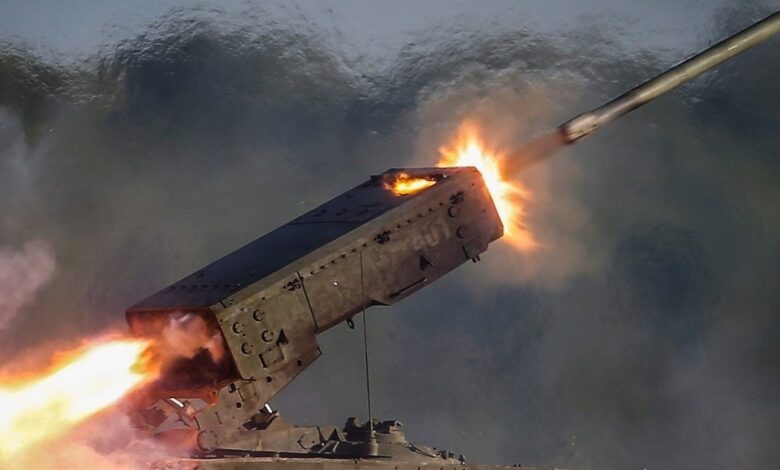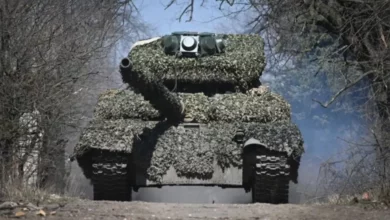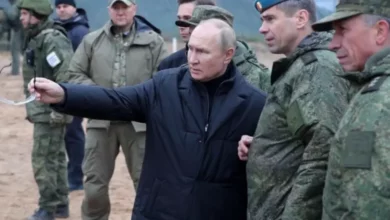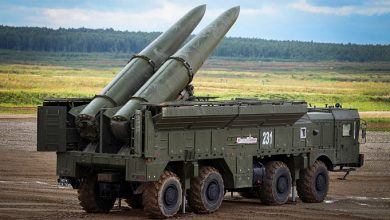Analysis: Russia-Ukraine war A missile and artillery battle like no other?

There is a significant possibility that the buildup of Russian forces around Ukraine may herald a new invasion in the coming days and weeks. One especially notable aspect of Ukraine’s vulnerability to Russia concerns the latter’s standoff-range missiles and artillery capabilities.
Weapons like the 310-mile range Iskander missile or the BM-30 Smerch can conduct strikes at operational depth, hitting logistical sinews with the potential to gravely impair fighting ability like command-and-control centers, vehicle parks, radars, electronic warfare units, airbases, ammo, and fuel dumps, as well as dense troop concentrations transiting towards the frontline.
Ukraine’s air defenses may intercept some of the incoming missiles, but themselves will likely become embroiled in a desperate fight for survival against air-defense suppression attacks.
At the tactical level, Russia’s non-contact warfare doctrine seeks to leverage drone spotters and electronic warfare to locate enemy forces for destruction at standoff distances using artillery without exposing tanks and infantry to direct fire until the opposition is shattered.
That means for Ukraine to hold out against a Russian attack, it too must be able to inflict attrition with its own long-distance fires to degrade and disrupt enemy artillery and inflict attrition on forces positioned outside direct fire range.
Counter-battery Warfare
Modern counter-battery radars make it possible to determine the origin point of enemy artillery fires and rapidly launch accurate counterstrikes to silence them. In a war of artillery duels, the ability to promptly unleash a large volume of fire and then scoot away in just a few minutes to avoid the counterbattery strike is essential.
Recognizing Ukraine desperately needed more assets to neutralize Russian artillery, the U.S. reportedly donated to Ukraine from 2015-2019 thirteen AN/TPQ-36 Firefinder and 20 newer AN/TQP-53 Quick Reaction counterbattery radars. The latter can detect rockets out to 37 miles (60 km) away, and shells, 21 miles away (36 km) while scanning across a 90 degree arc, or out to shorter distance in 180 degree scan modes.
These radars arguably did more to enable Ukrainian forces than higher-profile donations of Javelin anti-tank missiles. Reportedly, Ukrainian units overwatched by these radars had casualty rates decrease from 47% to 18%.
Ukraine also is producing indigenous Zoopark-2 and Zoopark-3 counter-battery radars as well as Polozhennya-2 acoustic counterbattery systems. Coming in the towed 1L220UK and self-propelled 1L221E models, these can reportedly detect shells 14 miles away, rockets at around 22 miles, and ballistic missiles at 50 miles.
Artillery Park
Ukraine and Russia mostly field the same Soviet-era systems, which can furthermore use Rocket-Assisted Projectiles (RAP) to boost range, though Russia’s have generally received a greater degree of modernization.
The bulk of Ukraine’s ground forces muster 540 2S1 and 2S3 shorter-range self-propelled howitzers; over 200 towed D-20 and D-30 short-range howitzers; and over 200 BM-21 Grad 122-millimeter multiple rocket launchers of various marks.
But larger, long-range guns and rockets that may generate lower volumes of fire over time than lighter ones, are well-suited for striking other artillery beyond the reach of retaliation.




